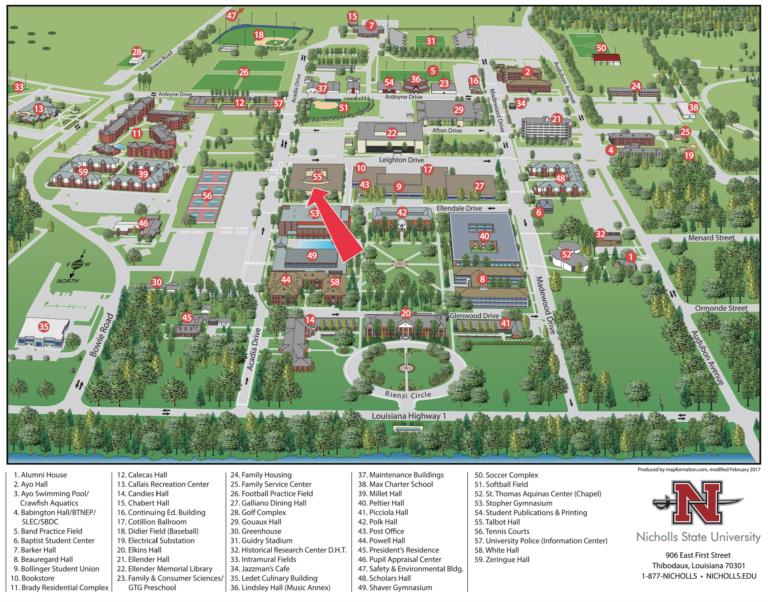Graduation & Retention rates
DEPARTMENT MENU
Department of Mass Communication (MACO)
Graduation & Retention Rates
2017 Cohort: The six-year graduation rate for the 2017 cohort of 17 students was 15% for those who started and finished within the Unit, and 41.2% for those who started in MACO and finished in any degree at the University.
Retention:
- In Fall 2018, the department had a 59% retention rate of 10 students.
- In Fall 2019, the department had a 53% retention rate of 9 students.
- In Fall 2020, the department had a 53% retention rate of 9 students.
- In Fall 2021, the department had a 18% retention rate of 3 students.
- In Fall 2022, the department had a 6% rentention rate of 1 student.
Graduation:
- 12% of the MACO 2017 cohort graduated in the major within four years, while 18% of the cohort graduated within the University.
- 15% of the MACO cohort graduated in the major within six years, while 38% of the cohort graduated within the University.
Graduation Numbers:
- 2015: the department graduated 16 students.
- 2016: the department graduated 15 students.
- 2017: the department graduated 24 students.
- 2018: the department graduated 28 students.
- 2019: the department graduated 30 students.
- 2020: the department graduated 18 students.
- 2021: the department graduated 21 students.
- 2022: the department graduated 18 students.
- 2023: the department graduated 23 students.
- Average: the department’s 5-year average is 22 graduates per year.
Mass Communication enrollment statistics*:
- Spring 2024 | 79 majors
- Fall 2023 | 88 majors
- Spring 2023 | 85 majors
- Fall 2022 | 87 majors
- Spring 2022 | 87 majors
- Fall 2021 | 105 majors
- Spring 2021 | 115 majors
- Fall 2020 | 117 majors
- Spring 2020 | 112 majors
- Fall 2019 | 119 majors
- Spring 2019 | 120 majors
- Fall 2018 | 134 majors
- Spring 2018 | 117 majors
- Fall 2017 | 113 majors
- Spring 2017 | 121 majors
- Fall 2016 | 116 majors
- Spring 2016 | 108 majors
- Fall 2015 | 118 majors
- Spring 2015 | 106 majors
- Fall 2014 | 121 majors
- Spring 2014 | 136 majors
- Fall 2013 | 134 majors
- Spring 2013 | 157 majors
- Fall 2012 | 154 majors
*Most current statistics as of
Previous Cohorts
2016 Cohort: The six-year graduation rate for the 2016 cohort of 21 students was 24% for those who started and finished within the Unit, and 29% for those who started in MACO and finished in any degree at the University.
Retention:
- In Fall 2017, the department had a 67% retention rate of 14 students.
- In Fall 2018, the department had a 52% retention rate of 11 students.
- In Fall 2019, the department had a 38% retention rate of 8 students.
- In Fall 2020, the department had a 19% retention rate of 4 students.
- In Fall 2021, the department had a 5% retention rate of 1 students.
Graduation:
- 24% of the MACO 2016 cohort graduated in the major within four years, while 29% of the cohort graduated within the University.
- 24% of the MACO cohort graduated in the major within six years, while 43% of the cohort graduated within the University.
2015 Cohort: The six-year graduation rate for the 2015 cohort of 26 students was 46% for those who started and finished within the Unit, and 50% for those who started in MACO and finished in any degree at the University.
Retention:
- In Fall 2016, the department had a 62% retention rate of 16 students.
- In Fall 2017, the department had a 62% retention rate of 16 students.
- In Fall 2018, the department had a 58% retention rate of 15 students.
- In Fall 2019, the department had a 23% retention rate of 6 students.
- In Fall 2020, the department had a 8% retention rate of 2 students.
Graduation:
- 31% of the MACO 2015 cohort graduated in the the major within four years, while 31% of the cohort graduated within the University.
- 46% of the MACO cohort graduated in the major within six years, while 50% of the cohort graduated within the University.
2014 Cohort: The six-year graduation rate for the 2014 cohort of 30 students was 17% for those who started and finished within the Unit, and 50% for those who started in MACO and finished in any degree at the University.
Retention:
- In Fall 2015, the department had a 80% retention rate of 24 students.
- In Fall 2016, the department had a 67% retention rate of 20 students.
- In Fall 2017, the department had a 53% retention rate of 16 students.
- In Fall 2018, the department had a 30% retention rate of 9 students.
- In Fall 2019, the department had a 13% retention rate of 4 students.
Graduation:
- 13% of the MACO 2014 cohort graduated in the the major within four years, while 27% of the cohort graduated within the University.
- 17% of the MACO cohort graduated in the major within six years, while 50% of the cohort graduated within the University.
2013 Cohort: The six-year graduation rate for the 2013 cohort of 17 was 24% for those who started and finished within the Unit, and 41% for those who started in MACO and finished in any degree at the University.
Retention:
- In Fall 2014, the department had a 35% retention rate (the University rate was 59%).
- In Fall 2015, the department had a 24% retention rate (the University rate was 47%).
- In Fall 2016, the department had a 24% retention rate (the University rate was 47%).
- In Fall 2017, the department had a 0% retention rate (the University rate was 12%).
- In Fall 2018, the department had a 0% retention rate (the University rate was 0%).
Graduation:
- 24% of the MACO 2013 cohort graduated within four years, while the University program average was 35%.
- 24% of the MACO cohort graduated within five years, while the University’s five-year program average was 41%.
- 24% of the MACO cohort graduated within six years, while the University program average was 41%.
2012 Cohort: The six-year graduation rate for the 2012 cohort of 14 was 21% for those who started and finished within the Unit, and 43% for those who started in MACO and finished in any degree at the University.*
*Note that this figure represents those students who enter Nicholls as MACO majors and graduate in any degree within six years.
Retention:
- In Fall 2013, the department had a 29% retention rate (the University rate was 64%).
- In Fall 2014, the department had a 21% retention rate (the University rate was 50%).
- In Fall 2015, the department had a 29% retention rate (the University rate was 50%).
- In Fall 2016, the department had a 7% retention rate (the University rate was 21%).
- In Fall 2017, the department had a 0% retention rate (the University rate was 7%).
Graduation:
- 14% of the MACO 2012 cohort graduated within four years, while the University program average was 21%.
- 21% of the MACO cohort graduated with in five years, while the University’s five-year program average was 43%.
- 21% of the MACO cohort graduated within six years, while the University program average was 43%.
2011 Cohort: The six-year graduation rate was 28% for those who started and finished within the Unit, and 50% for those who started in MACO and finished in any degree at the University.* The overall University graduation rate was 49%.
*Note that this figure represents those students who enter Nicholls as MACO majors and graduate in any degree within six years. This represents a change from posted data for earlier cohorts, which represents those students who entered and graduated from the MACO program within six years. The Unit changed its computation method to those used at other institutions to determine graduation rates.
Retention:
- In Fall 2012, eighteen of those students still remained for a 67% retention rate (the University rate was 78%).
- In Fall 2013, ten of those students still remained for a 56% retention rate (the University rate was 72%).
- In Fall 2014, six of those students still remained for a 33% retention rate (the University rate was 56%).
- In Fall 2015, one of those students still remained for a 6% retention rate (the University rate was 33%).
- In Fall 2016, zero of those students still remained for a 0% retention rate (the University rate was 6%).
Graduation:
- 22% of the MACO 2011 cohort graduated within four years, while the University program average was 33%.
- 28% of the MACO cohort graduated with in five years, while the University’s five-year program average was 50%.
- 28% of the MACO cohort graduated within six years, while the University program average was 50%.
2010 Cohort: Within six years, the graduation rate was 41% for the Unit and 47% for the University generally.*
*Note that this figure represents those students who enter Nicholls as MACO majors and graduate in any degree within six years. This represents a change from posted data for earlier cohorts, which represents those students who entered and graduated from the MACO program within six years. The Unit changed its computation method to those used at other institutions to determine graduation rates.
Retention:
- In Fall 2011, fifteen of those students still remained for a 47% retention rate (the University rate was 45%).
- In Fall 2012, ten of those students still remained for a 31% retention rate (the University rate was 28%).
- In Fall 2013, eight of those students still remained for a 25% retention rate (the University rate was 22%).
- In Fall 2014, two of those students still remained for a 6% retention rate (the University rate was 10%).
- In Fall 2015, one of those students still remained for a 3% retention rate (the University rate was 1%).
Graduation:
- 16% of the MACO 2010 cohort graduated within four years, while the University program average was 9%.
- 22% of the MACO cohort graduated with in five years, while the University’s five-year program average was 17%.
- 22% of the MACO cohort graduated within six years, while the University program average was 18%.
2009 Cohort: Within six years, our department graduates 38 percent of our majors compared to 21 percent for the remaining 39 degree programs at the University.
Retention:
- In Fall 2009, eleven of those students remained for a 44% retention rate (the University rate was 42%).
- In Fall 2010, nine of those students still remained for a 36% retention rate (the University rate was 27%).
- In Fall 2011, eight of those students still remained for a 32% retention rate (the University rate was 21%).
- In Fall 2012, four of those students still remained for a 16% retention rate (the University rate was 9%).
- In Fall 2013, one of those students still remained for a 4% retention rate (the University rate was 2%).
- In Fall 2014, two of those students still remained for a 5% retention rate (the University rate was 3%).
Graduation:
- 23% of the MACO 2009 cohort graduated within four years, while the University program average was 10%.
- 33% of the MACO cohort graduated with in five years, while the University’s five-year program average was 18%.
- 38% of the MACO cohort graduated within six years, while the University program average was 21%.
2008 Cohort: Within six years, our department graduates 28 percent of our majors compared to 18 percent for the remaining 39 degree programs at the University.
Retention:
- In Fall 2008, 25 first-time freshmen enrolled at Nicholls with the intention to major in Mass Communication.
- In Fall 2009, eleven of those students remained for a 44% retention rate (the University rate was 42%).
- In Fall 2010, nine of those students still remained for a 36% retention rate (the University rate was 24%).
- In Fall 2011, eight of those students still remained for a 32% retention rate (the University rate was 10%).
- In Fall 2012, four of those students still remained for a 16% retention rate (the University rate was 4%).
- In Fall 2013, one of those students still remained for a 4% retention rate (the University rate was 2%).
Graduation:
- 20% of the MACO 2008 cohort graduated within four years, while the University program average was 10%.
- 28% of the MACO cohort graduated with in five years, while the University’s five-year program average was 16%.
- 28% of the MACO cohort graduated within six years, while the University program average was 18%.
2007 Cohort: Within six years, our department graduates 17 percent of our majors compared to 17 percent for the remaining 39 degree programs at the University.
Retention:
- In Fall 2007, 30 first-time freshmen enrolled at Nicholls with the intention to major in Mass Communication.
- In Fall 2008, ten of those students remained in the program for a 33% retention rate (the rate for the remaining 39 degree programs at the University was 44%).
- In Fall 2009, eight of those students remained for a 27% retention rate (the University rate was 30%).
- In Fall 2010, eight of those students still remained for a 27% retention rate (the University rate was 24%).
- In Fall 2011, four of those students still remained for a 13% retention rate (the University rate was 10%).
- In Fall 2012, zero of those students still remained for a 0% retention rate (the University rate was 4%).
Graduation:
- 10% of the MACO 2007 cohort graduated within four years, while the University program average was 12%.
- 17% of the MACO cohort graduated with in five years, while the University’s five-year program average was 18%.
- 17% of the MACO cohort graduated within six years, while the University program average was 19%.
2006 Cohort: Within six years, our department graduates 20 percent of our majors compared to 17 percent for the remaining 39 degree programs at the University.
Retention:
- In Fall 2006 20 first-time freshmen enrolled at Nicholls with the intention to major in Mass Communication.
- In Fall 2007, six of those students remained in the program for a 30% retention rate (the rate for the remaining 39 degree programs at the University was 45%).
- In Fall 2008, five of those students remained for a 25% retention rate (the University rate was 29%).
- In Fall 2009 those five students still remained for a 25% retention rate (the University rate was 23%).
Graduation:
- 10% of the MACO 2006 cohort graduated within four years, while the University program average was 8%.
- 15% of the MACO cohort graduated with in five years, equal to the University’s five-year program average.
- 20% of the MACO cohort graduated within six years, while the University program average was 17%.
CONTACT INFORMATION
Department of Mass Communication (MACO)
Office Location
102 Talbot Hall
Mailing Address
PO Box 2031, Thibodaux, LA 70310
Phone
985.448.4586
fax: 985.448.4577
Dr. James Stewart, Head
CAMPUS LOCATION


